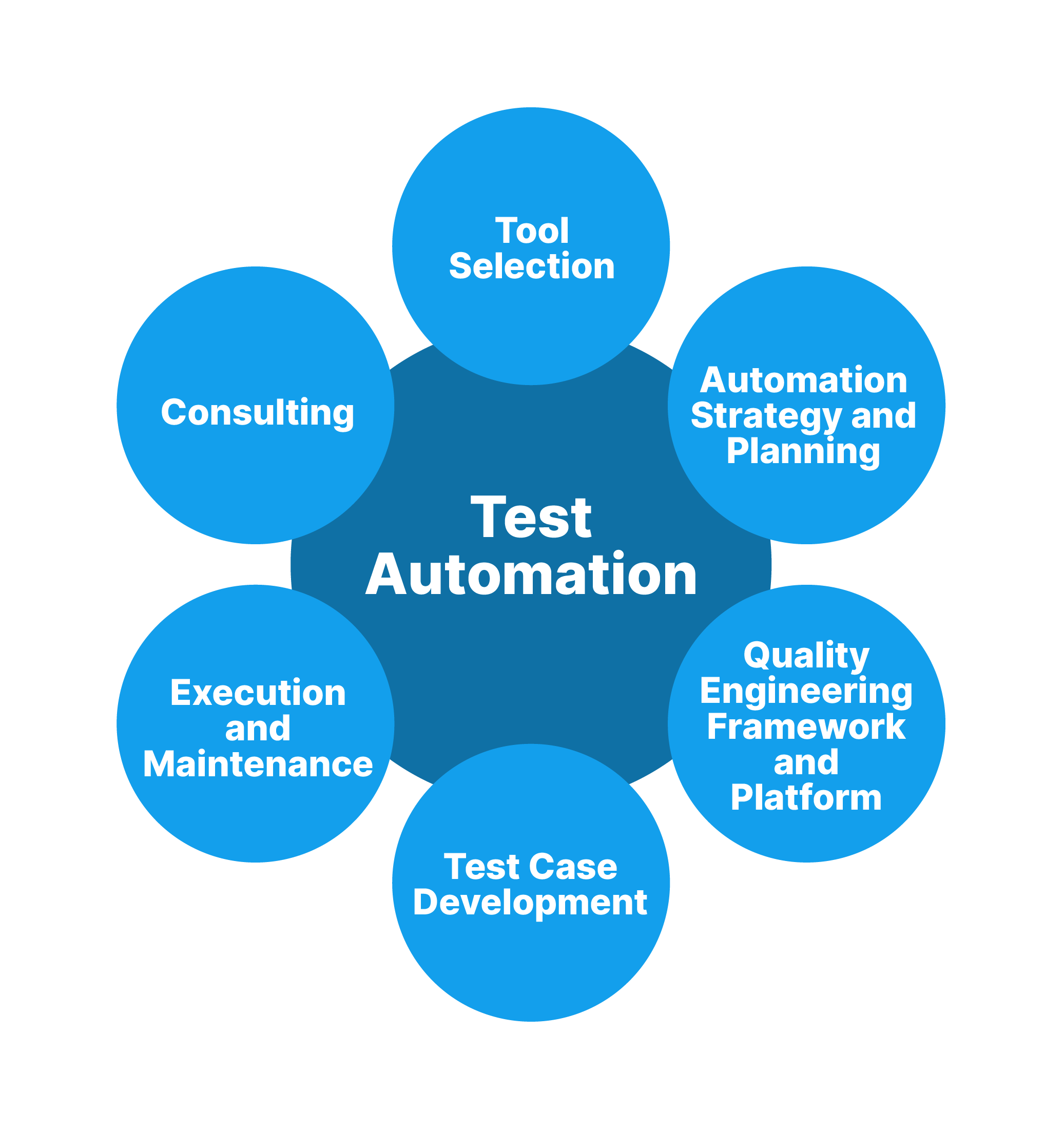Automation Testing: Secret Steps to Improve Development Lifecycles
Automation Testing: Secret Steps to Improve Development Lifecycles
Blog Article
Making Certain Success in Automation Evaluating: Secret Metrics, Obstacles, and Solutions Every QA Group Ought To Know
In the realm of software application top quality assurance, the landscape of automation screening is ever-evolving, demanding a careful technique to guarantee smooth operations. The journey to mastering automation testing is paved with nuances that call for a keen eye for tracking, evaluation, and constant enhancement. As the sector propels onward, the mission for optimal efficiency in automation testing stays a constant search, advising QA teams to equip themselves with the understanding and methods important for victory.
Significance of Secret Metrics
Recognizing the significance of key metrics is vital for evaluating the performance and performance of automation testing processes. Key metrics work as measurable steps that offer useful insights right into numerous elements of the screening process, such as test coverage, examination execution time, defect density, and examination case effectiveness. By evaluating these metrics, QA teams can identify bottlenecks, inadequacies, and areas for renovation within their automation testing framework.
One critical element of essential metrics is their capacity to track progression and keep an eye on the general health and wellness of the screening process (automation testing). They enable stakeholders to make enlightened decisions based on data-driven understandings, which can lead to a lot more reliable screening methods and better resource allocation. Furthermore, crucial metrics can assist teams set realistic objectives, determine the success of automation campaigns, and show the ROI of automation testing initiatives

Usual Difficulties Faced
Obstacles frequently run into in automation screening processes can considerably affect the general performance and performance of QA teams. One of the major challenges is the choice of the right test cases for automation. Not all test situations are suitable for automation, and choosing the incorrect ones can result in lost time and sources. Furthermore, preserving test manuscripts can be a complicated job, specifically as the application undergoes regular adjustments. Test script upkeep needs continual updates and adjustments to guarantee they show the current capability properly. Another usual obstacle is the initial financial investment needed for establishing up automation structures and tools. This can be a barrier for some organizations, especially smaller ones with restricted budgets. Automation screening may not cover all facets of testing, such as usability and customer experience screening, which still call for manual treatment. Getting rid of these difficulties needs appropriate planning, critical test instance selection, robust maintenance processes, sufficient sources, and a clear understanding of the limitations of automation testing.
Efficient Solutions for Obstacles
To address the barriers come across in automation screening, implementing efficient services is important for improving the performance and performance of QA teams. One vital solution is to buy durable training programs for QA teams to ensure they have the necessary skills to successfully make use of automation devices. Training can bridge understanding gaps, boost understanding of automation frameworks, and improve scripting capabilities, ultimately causing much more reliable test development and implementation.
Another crucial remedy is to develop clear interaction networks within the QA team and with other stakeholders, such as designers and task managers. Effective interaction assists in straightening expectations, sharing progress updates, and without delay addressing concerns or roadblocks that may arise throughout the automation screening procedure.

Tracking and Analysis Methods
Executing efficient surveillance and evaluation strategies is essential for making certain the success and performance of automation testing processes. Additionally, assessing examination outcomes and metrics provides important understandings right into the quality of the software being evaluated and the performance of the screening strategy.
One secret technique in tracking and evaluation is using control panels that settle appropriate metrics and KPIs in a visually easily accessible layout. These dashboards supply a thorough summary of test execution status, examination insurance coverage, issue patterns, and other essential information. Consistently reviewing and examining these dashboards can help QA groups make informed choices, prioritize jobs, and maximize testing efforts.
Furthermore, carrying out automated signals and alerts based on predefined thresholds can improve aggressive surveillance and prompt intervention. By setting up signals for performance variances or examination failings, teams can attend to concerns without delay and avoid them from intensifying. On the whole, tracking and evaluation strategies play an essential duty in making sure the efficiency and success of automation screening initiatives.
Continual Renovation Strategies
Enhancing the efficiency of automation screening processes demands the consistent refinement of approaches and methodologies. Continual enhancement approaches the original source are pivotal for QA teams why not try these out to adapt to progressing modern technologies and provide high-quality software products. One key method to improving automation testing procedures is to carry out routine testimonials and retrospectives. By examining past testing cycles, groups can recognize traffic jams, inadequacies, and locations for enhancement. Applying feedback loops and integrating lessons discovered right into future testing structures can yield significant renovations over time.

Verdict
In verdict, it is vital for QA teams to comprehend the crucial metrics, difficulties, and services in automation testing to make sure success. By carefully monitoring and evaluating information, implementing reliable options to typical challenges, and continuously boosting approaches, QA teams can optimize their screening processes and supply premium software program items. Sticking to these practices will inevitably cause extra efficient and efficient automation testing methods.
By assessing these metrics, QA teams can recognize bottlenecks, inefficiencies, and locations for enhancement within their automation testing framework.
In addition, crucial metrics can help teams established realistic goals, measure the success of automation campaigns, and show the ROI like it of automation testing initiatives.
Obstacles generally come across in automation testing processes can considerably influence the general performance and efficiency of QA teams. Automation screening might not cover all facets of screening, such as use and customer experience screening, which still need manual intervention.In final thought, it is vital for QA teams to recognize the vital metrics, challenges, and services in automation testing to make certain success.
Report this page